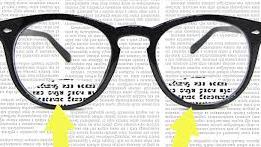Progressive lenses, also known as multifocal lenses or varifocal lenses, are eyeglass lenses that allow people to see clearly at different distances without having to switch between different pairs of glasses.
They work by gradually changing the lens power from distance vision at the top of the lens to intermediate vision in the middle to near vision at the bottom. This allows wearers to see clearly at all distances without any visible lines on the lenses.
Progressive lenses are often recommended for people with presbyopia, a natural age-related condition that causes the lens of the eye to lose its ability to focus on close-up objects. They can also be used to correct other vision problems, such as astigmatism or nearsightedness, while providing clear vision at all distances.
BIFOCAL VS PROGRASSIVE LENSES
Progressive lenses and Bifocal lenses are two types of eyeglass lenses that are used to correct presbyopia, an age-related condition that causes difficulty in focusing on close objects.
Bifocal lenses have two distinct optical powers, with the upper portion of the lens used for distance vision and the lower portion used for reading. There is a visible line on the lens that separates the two powers.
Progressive lenses, on the other hand, have a gradual change in optical power from the top of the lens to the bottom, providing a seamless transition from distance to intermediate to reading vision. They do not have a visible line on the lens, which makes them more aesthetically pleasing than bifocal lenses.
While both types of lenses can correct presbyopia, progressive lenses offer a more natural and comfortable visual experience because they eliminate the visible line and provide a smooth transition between different optical powers. However, some people may find it difficult to adjust to the progressive lens design because the visual experience may be different than what they are used to with traditional bifocals.
Ultimately, the choice between bifocal and progressive lenses depends on your personal preferences and visual needs. It’s important to consult with your eye doctor to determine which type of lens is best for you.





